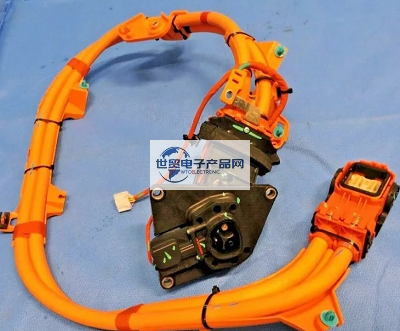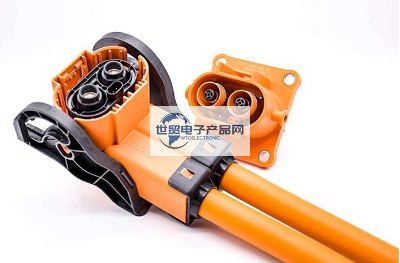Categorization:Product Information
The technology of ultrasonic welding high-voltage connectors is only the tip of the iceberg in the field of new energy vehicles, and there are many technologies to be broken through and innovated. This article introduces the ultrasonic welding process of high voltage connectors. Ultrasonic welding Ultrasonic welding is to transmit high-frequency vibration waves to the surfaces of two objects to be welded. Under the action of pressure, the surfaces of two objects produce friction, thus forming the fusion between molecular layers. Ultrasonic welding converts 50/60 Hz current to 15.20.30 kHz or 40 kHz through an ultrasonic generator. The converted high-frequency electric energy is converted into mechanical motion with the same frequency by a transducer, and then is transmitted to the welding head by a group of amplitude transformer devices capable of changing the amplitude. The welding head transfers the received vibration energy to the joint of the welding part, where the vibration energy is converted into heat energy by friction, causing the metal to melt. The main components of ultrasonic welding system include ultrasonic generator, transducer, amplitude transformer, three groups of welding head, mould and frame. The principle of ultrasonic welding is to use the ultrasonic frequency (more than 16 KHz) of mechanical vibration energy to connect the same or different metals. With ultrasonic welding, the metal frame under hydrostatic pressure does not supply current to the workpiece, nor does it apply a high temperature heat source to the workpiece, but converts the vibration energy of the wire frame into friction work, deformation energy and finite temperature rise between the workpieces. Metallurgical bonding at the joint is a solid state welding without melting of the base metal. Thereby effectively overcoming the phenomena of splashing, oxidation and the like in the electric welding process. The ultrasonic metal welding machine can be used for single-point welding, multi-point welding and short strip welding of thin wires or thin sheets of copper, silver, aluminum, nickel and other non-ferrous metals. The welding method has the advantages of short welding time, low cost and the like.
---------------------------------------------------------------------------------------------------
Advantages and disadvantages of metal welding Ultrasonic metal welding has the advantages of high speed, energy saving, high fusion strength, good conductivity, no spark, cold processing, etc. The disadvantages are that the welding metal parts can not be too thick (generally 5mm or less), the welding spot position can not be too large and need to be pressurized. Ultrasonic metal welding is a machining process in which there is no current passing through the work being welded and there is no welding arc similar to that of electric welding. Because ultrasonic welding has no thermal conductivity and resistivity problems, it is undoubtedly an ideal metal welding method for non-ferrous materials, and can effectively weld thin sheets of different thicknesses. Ultrasonic welding technology VS traditional crimping technology: Principle: Ultrasonic welding is the reorganization of metal molecular lattice structure. Crimping is plastic deformation. Initial resistance (take 70 mm ² wire + connector as an example): ultrasonic welding is 1-3 μΩ, piercing the surface oxide film. Crimping is 10-20 μΩ, plastic deformation, copper wire is independent, copper wire surface oxide film exists, film resistance always exists. Long-term thermal (tensile/resistance) stability: Ultrasonic welding is a stable, one-piece structure that shows no significant change after 10000 thermal cycles. Crimping is plastic deformation and is present throughout the life cycle. (The copper wire becomes thinner, longer and looser> The resistance becomes larger, and the heating intensifies. One thermal cycle> One thermal expansion and contraction> One crimping.) After 2000-3000 thermal cycles, the resistance will have an inflection point, which is the crimping limit. Tolerance capacity and output requirements (material/size influence): ultrasonic welding has large tolerance capacity. Small changes in material properties have no effect on welding; terminal size tolerance requirements are not high, wire diameter tolerance capacity is large. Crimping tolerance capability is small. The material properties affect the ductility, and the small difference of the ductility seriously affects the crimping consistency; the size requirement of the crimping sleeve is high, and the size tolerance of the copper wire diameter affects the crimping quality. Stability under long-term external force and vibration (Exp. Slow Motion test): ultrasonic welding tension and resistance are stable. Crimping tension and resistance are unstable. The tension will continue to decline, and the resistance will continue to rise; under the long-term external vibration, the copper wire of the crimp point will become thinner, longer and looser. Tensile force (take 70mm ² wire + connector as an example): ultrasonic welding has large tensile force and long-term stability (USCAR 38, 2700N). The crimping tension is small and continues to decrease (UL486A, 1235N). Exp. There are cases where the crimping tension is not enough and tin welding is added to increase the tension. Applicable wire range of process: ultrasonic welding is 0.75-25mm ², 16mm ² -80mm ², 70mm ² -160mm ². Crimping is 0.25mm ² -35mm ², above 50mm ² is not suitable for crimping. Process scope of application: ultrasonic welding is applicable to aluminum + copper (different materials), plate + plate, wire + wire (different forms). Crimping is only applicable to crimping the same material; wire + wire crimping must pass through the crimping sleeve; plate + plate cannot be crimped. The application range is narrow and the cost is increased. Now, through repeated experiments, some enterprises have developed a connection matching technology that can effectively overcome the defects of ultrasonic welding technology, and set up an efficient quality inspection system in the production process to ensure the excellent performance of products.

---------------------------------------------------------------------------------------------------
2、 on the World Trade Electronic Products Network Platform and Sales Product Profile: World Trade Electronic Products Network-professional agent/production/sales of various { connector | harness | cable products }; If you have relevant [connector | harness | cable products] procurement/purchase needs or want to buy/know what connector | harness | cable products solutions we can provide, please contact our business personnel below; if you have relevant [connector | harness | cable products] sales/resources and promotion needs, please click "Business Cooperation ←" to negotiate with the specialist!